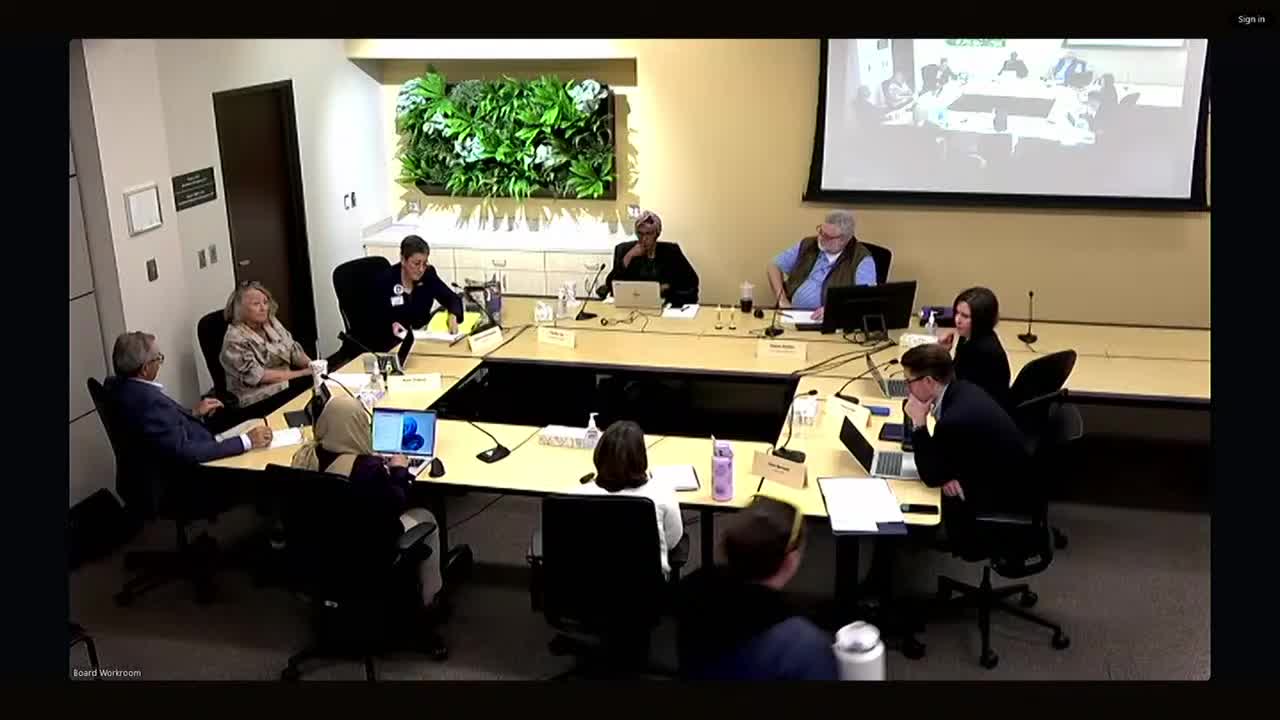Harrington urges earlier, more specific budget guidance; board sets tight Jan. deadline for principles
October 31, 2025 | Washington County, Oregon
This article was created by AI summarizing key points discussed. AI makes mistakes, so for full details and context, please refer to the video of the full meeting. Please report any errors so we can fix them. Report an error »

Chair Catherine Harrington told the board she wants the county’s newly completed Service Level Assessment database to be a primary input for developing sharper budget guiding principles and priorities ahead of the FY27 proposed budget.
Harrington said the county faces a structurally imbalanced budget and listed items she believes must be accommodated in the coming proposed budget, including restored staffing for reopened pods in county facilities, deployment of body‑worn cameras for the jail, three upcoming labor agreements, museum collection liabilities, and the scheduled end of some ARPA funding in December 2026. She also outlined areas for possible reevaluation — such as the county’s community corrections center, animal shelter operations, and water‑master funding — and asked the board to consider whether some county services could be delivered differently.
County Administrative Officer Tanya Angie urged the board to be explicit about the level of direction they wanted. Angie and finance staff explained the timeline constraints for budget preparation: departments must have inputs entered by a mid‑February “pencils down” date to meet the April proposed budget milestone. Angie and the budget team told commissioners they could begin departmental financial direction in December, but asked that final board guiding principles be adopted by early January (January 8 preferred; no later than January 27–February 3) so staff could incorporate them into departmental targets.
Office of Finance staff and others noted a recent assessed‑value press release (property roll‑ons increased overall AV by roughly 11.7%) and warned that assessed‑value growth does not remove structural imbalances caused by inflation, rising labor and services costs, and expiring federal funds. Commissioners and the CAO agreed the SLA is a tool — not a substitute for departmental budgets and program plans — and recommended using SLA filtering to identify a short list of high‑priority services for deeper analysis before the finalization of guiding principles.
Several commissioners asked for more granular mandate citations (for example, specific Oregon Revised Statutes linked to a service). Staff said they could supply citations for targeted services but collecting statutory citations for all 297 services would exceed current staff capacity without further resources.
Ending: The board set a schedule for the near term: staff will present a 5‑year fiscal forecast on Nov. 6; the board will reconvene to review SLA‑based questions and a draft list of guiding priorities on Dec. 4; and the board agreed to aim to adopt final guiding principles by early January so staff can meet budgeting deadlines.
Harrington said the county faces a structurally imbalanced budget and listed items she believes must be accommodated in the coming proposed budget, including restored staffing for reopened pods in county facilities, deployment of body‑worn cameras for the jail, three upcoming labor agreements, museum collection liabilities, and the scheduled end of some ARPA funding in December 2026. She also outlined areas for possible reevaluation — such as the county’s community corrections center, animal shelter operations, and water‑master funding — and asked the board to consider whether some county services could be delivered differently.
County Administrative Officer Tanya Angie urged the board to be explicit about the level of direction they wanted. Angie and finance staff explained the timeline constraints for budget preparation: departments must have inputs entered by a mid‑February “pencils down” date to meet the April proposed budget milestone. Angie and the budget team told commissioners they could begin departmental financial direction in December, but asked that final board guiding principles be adopted by early January (January 8 preferred; no later than January 27–February 3) so staff could incorporate them into departmental targets.
Office of Finance staff and others noted a recent assessed‑value press release (property roll‑ons increased overall AV by roughly 11.7%) and warned that assessed‑value growth does not remove structural imbalances caused by inflation, rising labor and services costs, and expiring federal funds. Commissioners and the CAO agreed the SLA is a tool — not a substitute for departmental budgets and program plans — and recommended using SLA filtering to identify a short list of high‑priority services for deeper analysis before the finalization of guiding principles.
Several commissioners asked for more granular mandate citations (for example, specific Oregon Revised Statutes linked to a service). Staff said they could supply citations for targeted services but collecting statutory citations for all 297 services would exceed current staff capacity without further resources.
Ending: The board set a schedule for the near term: staff will present a 5‑year fiscal forecast on Nov. 6; the board will reconvene to review SLA‑based questions and a draft list of guiding priorities on Dec. 4; and the board agreed to aim to adopt final guiding principles by early January so staff can meet budgeting deadlines.
View the Full Meeting & All Its Details
This article offers just a summary. Unlock complete video, transcripts, and insights as a Founder Member.
✓
Watch full, unedited meeting videos
✓
Search every word spoken in unlimited transcripts
✓
AI summaries & real-time alerts (all government levels)
✓
Permanent access to expanding government content
30-day money-back guarantee

